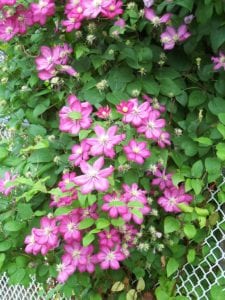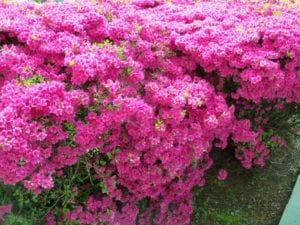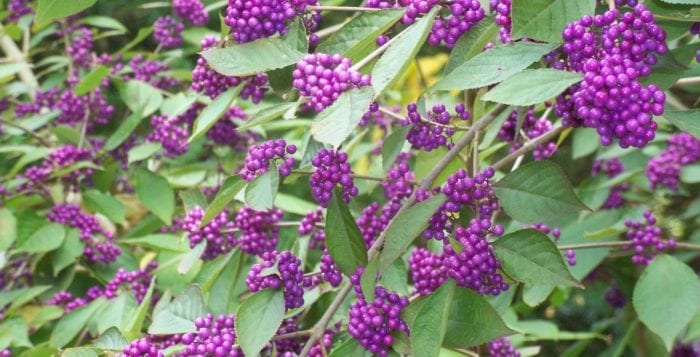By Ellen Barcel
If, for one reason or another, you have limited gardening space, there are ways of maximizing the space that you have. However, you need to think outside the box.
Vertical gardening

Consider using plants that grow up rather than out. Vining veggies (indeterminate tomatoes, cucumbers, peas, etc.) can be trained up a trellis or fence. The same is true with flowering plants, like clematis. This allows you to put in more plants in a given space.
Planters
Several large planters, strategically placed on a deck or patio, add to the growing space as well as the beauty of the area. Window boxes and planters, attached wherever there is a railing, will add to your growing space as will hanging baskets. Small tomato plants can even be grown in these hanging baskets.
Succession planting
You can also make efficient use of your gardening space by succession planting. When an early crop has come in, plant a second or even third crop of late summer or autumn veggies in the same space. Intercropping is something that Native Americans did by planting corn (which acted as a support) between vines like beans or squash. You can also scatter annual flower seeds in the same bed where you are growing spring flowering bulbs. By the time the bulbs have bloomed and the greenery faded, the annuals are sprouting and will soon bloom.
Dwarf plants

Using dwarf plants allows the gardener to grow a larger variety of plants since each dwarf plant takes up less space. Small rhododendrons include ‘PJM,’ ‘September Snow’ and ‘Cappuccino.’ Most azaleas stay relatively small and are easy to prune to keep to the size you need. Small rose bushes are nice in a sunny area. When you have a small amount of land, go for dwarf varieties of trees or trees, which generally don’t grow very large, like dogwood, Japanese red maple or crepe myrtle.
Less lawn
Unless you have a really pressing reason not to, cut back on the amount of land devoted to growing a lawn. It will be less work for you (mowing, spreading fertilizer and weed killer) and less chemicals will go into the environment. This frees up land for fruits and veggies, specimen trees, shrubs, etc.
Double duty
Make your plants do double duty. If you need a hedge, consider planting blueberry bushes. You’ll have your hedge and a bountiful crop of berries. Plant dwarf tomatoes in hanging baskets. They’ll dress up the outside and at the same time give you tomatoes for your salads. If you want to attract birds to the garden, consider any plant that produces berries that birds enjoy such as beautyberry. The berries can also be used to make jelly as can rose petals and rose hips.
For a kid’s play tepee, wire together a few poles to make the supports, set up as an inverted cone and plant pole beans or scarlet runner beans around the outside of the tepee, making sure you leave an opening for kids to come and go. If you don’t want veggies, plant climbing flowers instead.
There are several things to keep in mind when maximizing gardening space:
• Make sure you water you plants sufficiently. Those growing in pots can dry out more quickly than those raised in the ground. Those grown as part of a vertical gardening system may require more water in general than smaller plants raised in the same space.
• You may need to use more fertilizer than you would normally for the same reasons as needing to use more water. Be careful here, however, not to burn your plants. It’s safest to use compost.
• Keep out weeds as they will compete for resources in the garden.
Ellen Barcel is a freelance writer and master gardener. To reach Cornell Cooperative Extension and its Master Gardener program, call 631-727-7850.





